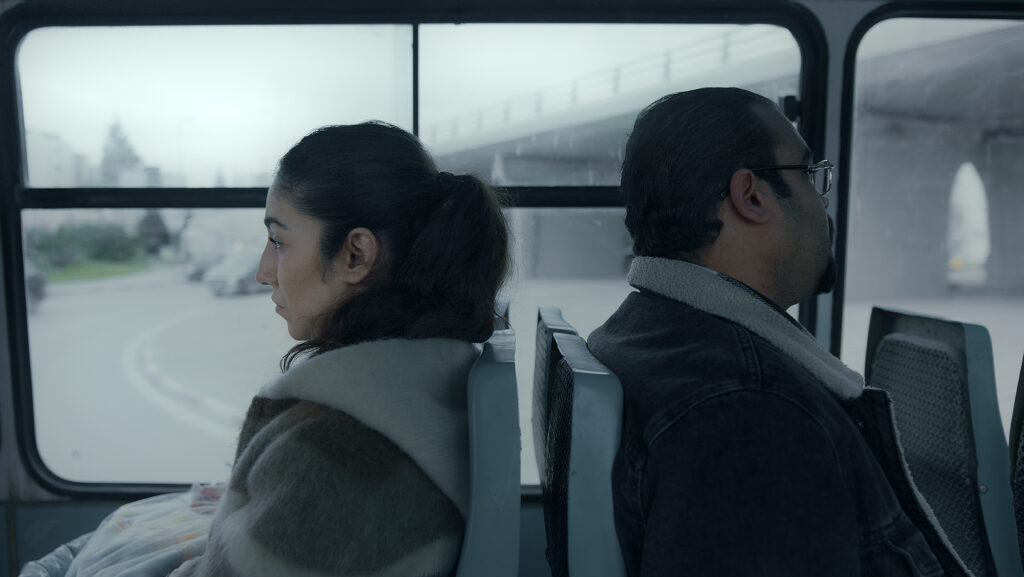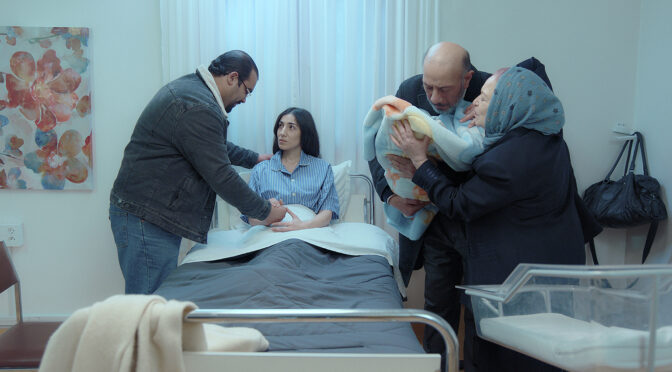Article by Beatrice Bertino
Translation by Irene Pezzini
A love story and the desire to create a family are the starting point of Abdelhamid Bouchnack’s film. Mariem, an orphan, who does not wear the veil, and Dalì, a Muslim who prays from time to time, are two young Tunisians who represent the avant-garde to which their country aspires. The birth of their child, however, reveals the deep uncertainties that govern a stagnant culture.
At the beginning, the story seems rather sweet. The parents-to-be, already close to each other, share the experience of waiting and the point of view of this framing emphasises their sense of closeness. Although the picture is often divided into two symmetrical halves – a choice that reminds us of Wes Anderson’s works – the protagonists share the same side of the frame, as a symbol of union.
The balance of the couple is, however, overturned when the nurse informs the new parents that the newborn is intersex. Until that moment, the sound commentary had accompanied the daily routine of the parents, but in this scene silence reigns. The doctor’s words that reach Dalì’s ears are so well articulated that eliminate any possibility of misunderstanding. Dalì is overwhelmed by the news: the sentence that gave him a source of pride with his friends at the bar, ‘a Man gives birth to another Man’, has no connection with reality.
Just as a prayer, the characters keep repeating that the important thing is that for the child to be healthy. Nevertheless, the good omen fails as the health of the newborn fades into the background and Dalì’s first priority becomes to resolve ‘the matter’ quickly. The film changes completely, and the sensitivity impersonated by Mariem gives way to the father’s violent behaviours. Dalì vomits at the sight of his child’s genitals, refuse to hold it in his arms and admits that it would have been better off dead. Even the composition of the framing, from this moment on, indicates distance and separation: the partners now stand on opposite sides of the frame to emphasise their distance and the rift between culture and nature.

After Mariem’s struggles, a solution seems to be close. The tension eases, making room for the hope that the good of the newborn will prevail: they will decide for themselves, during puberty, which sexual organ to keep. In a final twist, Dalì makes an extreme gesture: he kidnaps the child and takes it to the hospital to remove one of its genitals.
In the last scene, a temporal ellipsis shows Nour (a gender-neutral name) as a teenager with a feminine gender expression. Inevitably, as viewers we wonder what surgery the surgeon’s scalpel performed years earlier, but we do not get a definitive answer. Reflecting on the complex cultural, social and religious issues raised by this story, it appears evident that the answer remains trapped in the problem itself.

